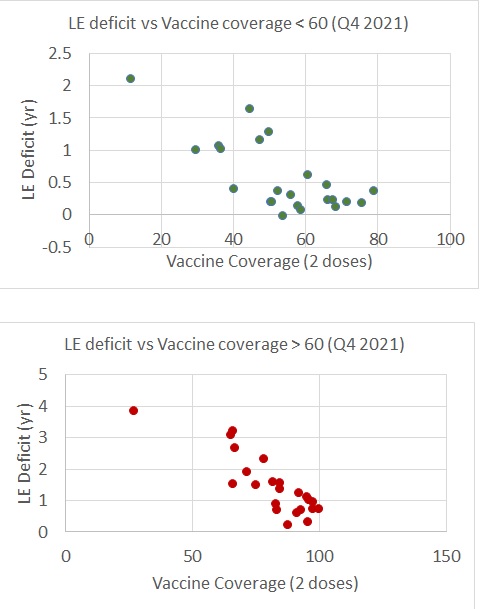The story of Covid-19 is getting three years old, and we are still getting the magnitude of the calamity it caused. One way of studying the impact is by mapping the change in life expectancy during the pandemic. Nature human behaviour has just published a paper on this topic, summarising data collected from 29 countries.
Understanding life expectancy
The calculations, known as the period life expectancies, are not a prediction but an estimate of how long a newborn will live if today’s death rate persists for her entire life. So these numbers will vary between 2020, when it was severe cases of Covid-19 with no vaccinations available, to 2021, where there were some mitigations available, to 2022, where the deadliness was relatively lower.
LE deficit
The researchers covered the change in LE rates of countries, that included Europe, the USA and Chile, since 2019, using data on all-cause mortality. They also define a term, LE deficit, which is the difference between the observed LE, and expected LE based on pre-pandemic estimates. Consider this: a country estimates an LE of 80 years in the last quarter of 2021. Imagine it was 79 years in 2015 and was slowly progressing upward (based on the trends from the past few years), and the expectation by Q4 2021 was 82. Then the LE deficit is 80 – 80 = 2 years.
There are a bunch of findings worth mentioning here:
Of the countries under investigation, only Finland, Norway and Denmark did not see a decline in LE (in comparison with 2019) in 2020.
Many Western European countries bounced back in 2021, i.e. positive change LE from 2020 to 2021, whereas most of Eastern European, the USA and Chile continued the fall.
One impressive trend was the correlation between vaccination coverage and life expectancy deficit.

Life expectancy changes since COVID-19: Nature Human Behaviour

